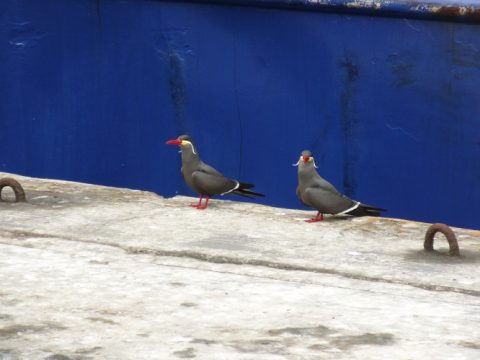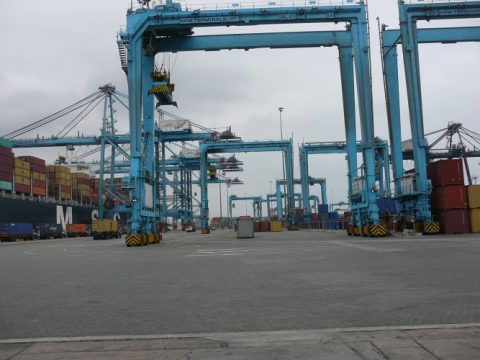After a long and exhausting flight from Europe, we arrived in Lima, Peru, on the 30th of May. Down here we were facing the typical Peruvian winter weather. It was cloudy and rainy and felt almost like Kiel in summer. The next day we went straight to the port of Callao, a place where many of us just spent two months for the KOSMOS experiment.
We- i.e. the scientific team of M138- are 29 scientists from five institutes (GEOMAR Kiel, CAU Kiel, MPI for Mar. Microbiol. (Bremen), Univ. Princeton, SDU (DK)) covering various disciplines such as biology, microbiology, chemistry and physical oceanography. During our cruise we aim to investigate the role of organic matter, nitrogen, carbon and trace metal cycling in the oxygen minimum zone (OMZ) off Peru. This OMZ is supposed to expand as a consequence of climate change, which would mean that oxygen is lost from the waters. Thus, we aim to understand to which degree this is already taking place and how life in the ocean will respond to the loss of oxygen.
When arriving in the port, we saw a lot of pelicans in the water and air. My first memory of this port (from ~10 years ago) is that it was covered with birds. It is not this time, but a few birds were on watch at Meteor.

Inkaseeschwalben Foto: Hermann Bange
We left the port of Callao in the afternoon of June 1st. While some of us spent much of their life time on this ship and to this end they feel almost home on Meteor, it will be the first cruise for some others. The first couple of days were mostly spent setting up the labs and instruments. So far, we already sampled the first stations and we are looking forward to one more month on RV Meteor.

Der Hafen von Callao. Foto: Hermann Bange